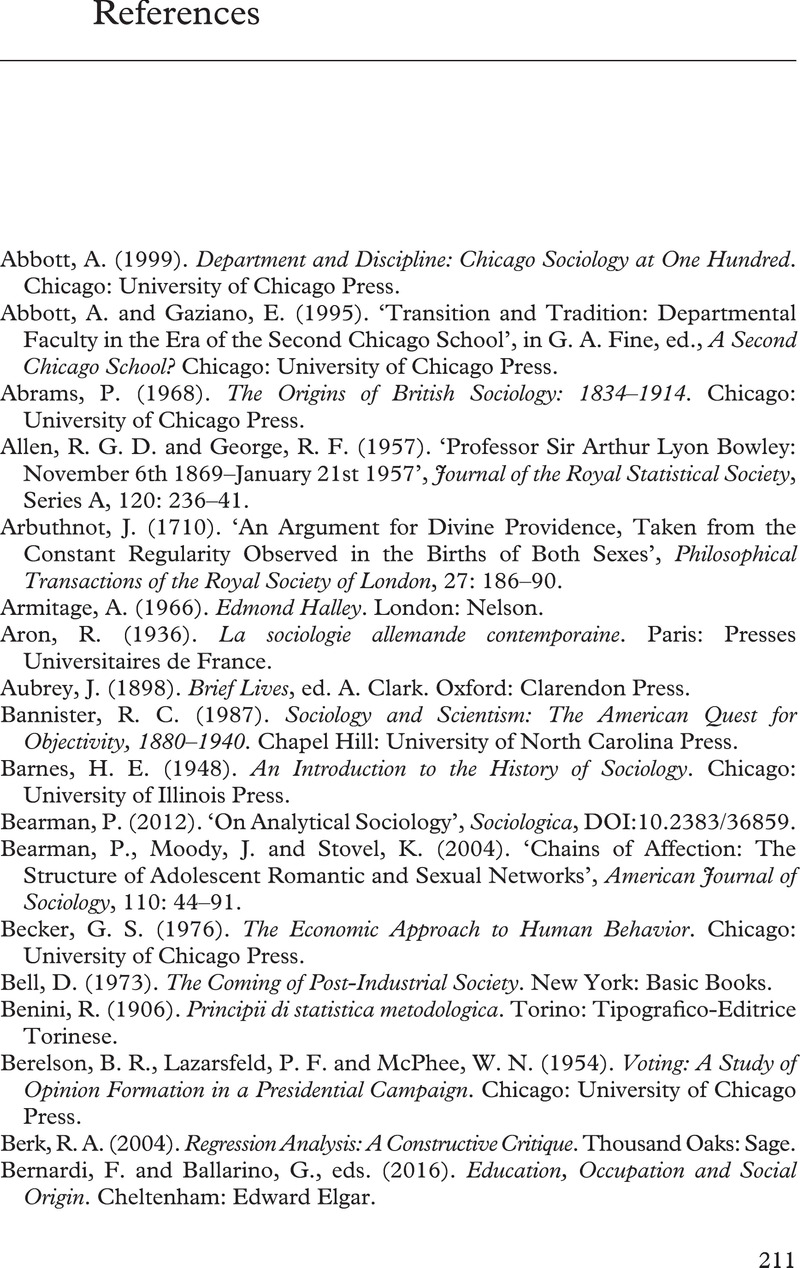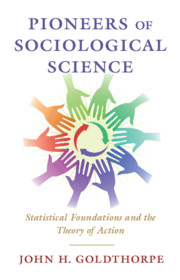Book contents
- Pioneers of Sociological Science
- Pioneers of Sociological Science
- Copyright page
- Dedication
- Contents
- Figures
- Acknowledgements
- Introduction
- 1 The Beginnings
- 2 Quetelet and His Critics
- 3 The English Statisticians
- 4 The Sample Survey Specialists
- 5 Weber and the Concept of Action
- 6 From Columbia to Chicago
- 7 From Chicago back to Columbia
- 8 Duncan and Sociology as a Population Science
- 9 The Return to the Concept of Action and Micro–Macro Relations
- 10 Conclusion
- References
- Index
- References
References
Published online by Cambridge University Press: 15 February 2021
- Pioneers of Sociological Science
- Pioneers of Sociological Science
- Copyright page
- Dedication
- Contents
- Figures
- Acknowledgements
- Introduction
- 1 The Beginnings
- 2 Quetelet and His Critics
- 3 The English Statisticians
- 4 The Sample Survey Specialists
- 5 Weber and the Concept of Action
- 6 From Columbia to Chicago
- 7 From Chicago back to Columbia
- 8 Duncan and Sociology as a Population Science
- 9 The Return to the Concept of Action and Micro–Macro Relations
- 10 Conclusion
- References
- Index
- References
Summary

- Type
- Chapter
- Information
- Pioneers of Sociological ScienceStatistical Foundations and the Theory of Action, pp. 211 - 236Publisher: Cambridge University PressPrint publication year: 2021

